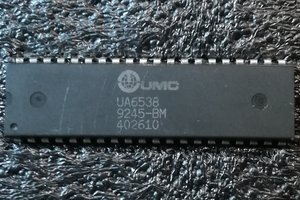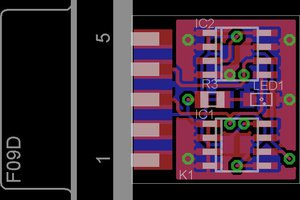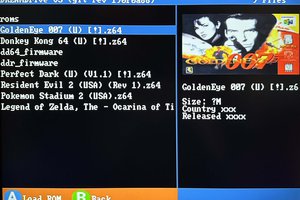Full FIFO communication: HPS-to-FPGA and FPGA-to-HPS
This example generates two FIFOs in Qsys, one each for two-way communication with the HPS. The FIFO dialog sets up a depth of 256 words, but you could clearly increase this, if necessary. In the dialog, make sure that Allow Backpressure is turned off. One port of each FIFO is exported the the FPGA fabric, where you build state machines to use the data from the FIFO. For this loop-back example, the HPS-to-FPGA receive state machine waits for data in the FIFO, then reads the data word into a buffer and sets a ready flag. The FPGA-to-HPS state machine waits for space in the FPGA-to-HPS FIFO then writes the data to the FIFO and clears the ready flag. Timing for the FIFO read/write is not specified in the users manual! The HPS-to-FPGA read operation takes TWO cycles but the read-enable line can only be held high for ONE cycle. Holding it high for two cycles results in two reads. The HPS program asks the user for the number of items to send (0<N<500), reads the fill-level of each of the FIFOs, then prints out the returned values and fill levels. Note that for N greater than 256, using block-write, that the FPGA-to-HPS FIFO will fill, then stall, while the HPS-to-FPGA FIFO keeps filling.
(HPS program, top-level, ZIP)
Note that the nonblocking read/write macros in the HPS program are not well tested.
If you use nonblocking read/write that you must check the return value for success.
The first six macros read out the state of the read/write FIFOs.
#define WRITE_FIFO_FILL_LEVEL (*FIFO_write_status_ptr)
#define READ_FIFO_FILL_LEVEL (*FIFO_read_status_ptr)
#define WRITE_FIFO_FULL ((*(FIFO_write_status_ptr+1))& 1 )
#define WRITE_FIFO_EMPTY ((*(FIFO_write_status_ptr+1))& 2 )
#define READ_FIFO_FULL ((*(FIFO_read_status_ptr+1)) & 1 )
#define READ_FIFO_EMPTY ((*(FIFO_read_status_ptr+1)) & 2 )
// arg a is data to be written
#define FIFO_WRITE_BLOCK(a) {while (WRITE_FIFO_FULL){WAIT};FIFO_WRITE=a;}
// arg a is data to be written, arg b is success/fail of write: b==1 means success
#define FIFO_WRITE_NOBLOCK(a,b) {b=!WRITE_FIFO_FULL; if(!WRITE_FIFO_FULL)FIFO_WRITE=a; }
// arg a is data read
#define FIFO_READ_BLOCK(a) {while (READ_FIFO_EMPTY){WAIT};a=FIFO_READ;}
// arg a is data read, arg b is success/fail of read: b==1 means success
#define FIFO_READ_NOBLOCK(a,b) {b=!READ_FIFO_EMPTY; if(!READ_FIFO_EMPTY)a=FIFO_READ;}
 Bruce Land
Bruce Land
 Voja Antonic
Voja Antonic
 padnest
padnest
 danjovic
danjovic
 Kaili Hill
Kaili Hill